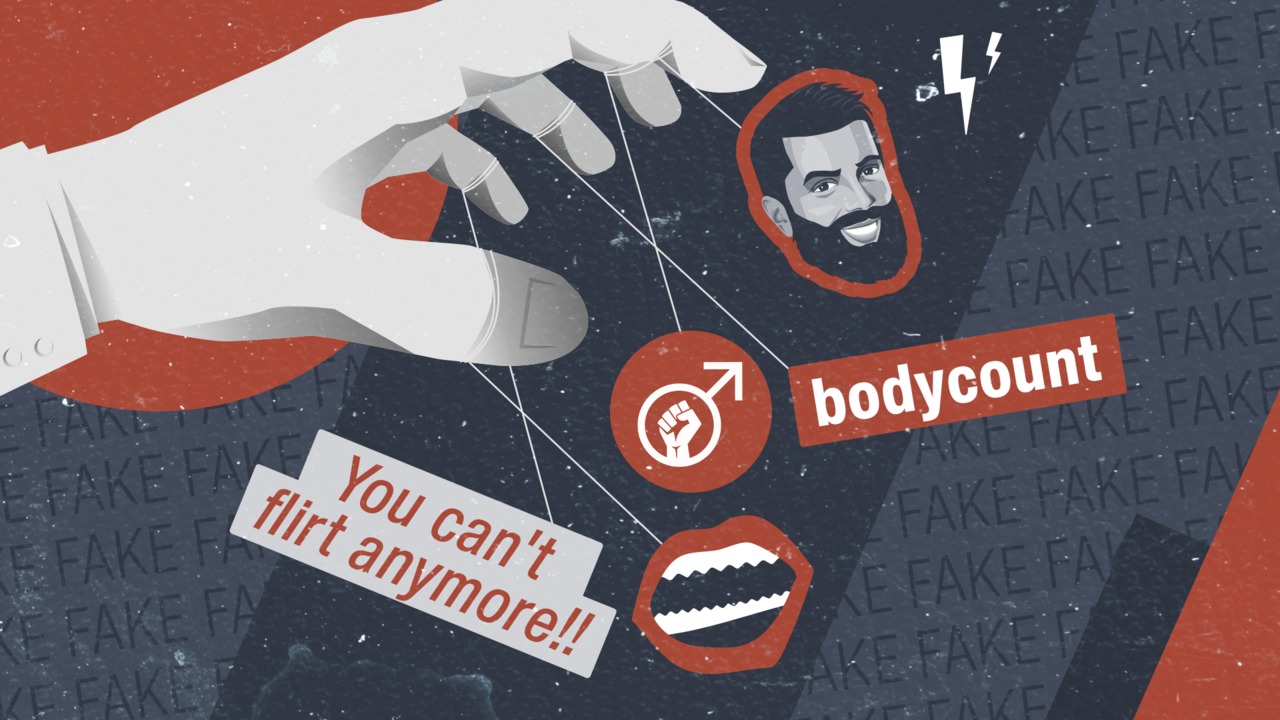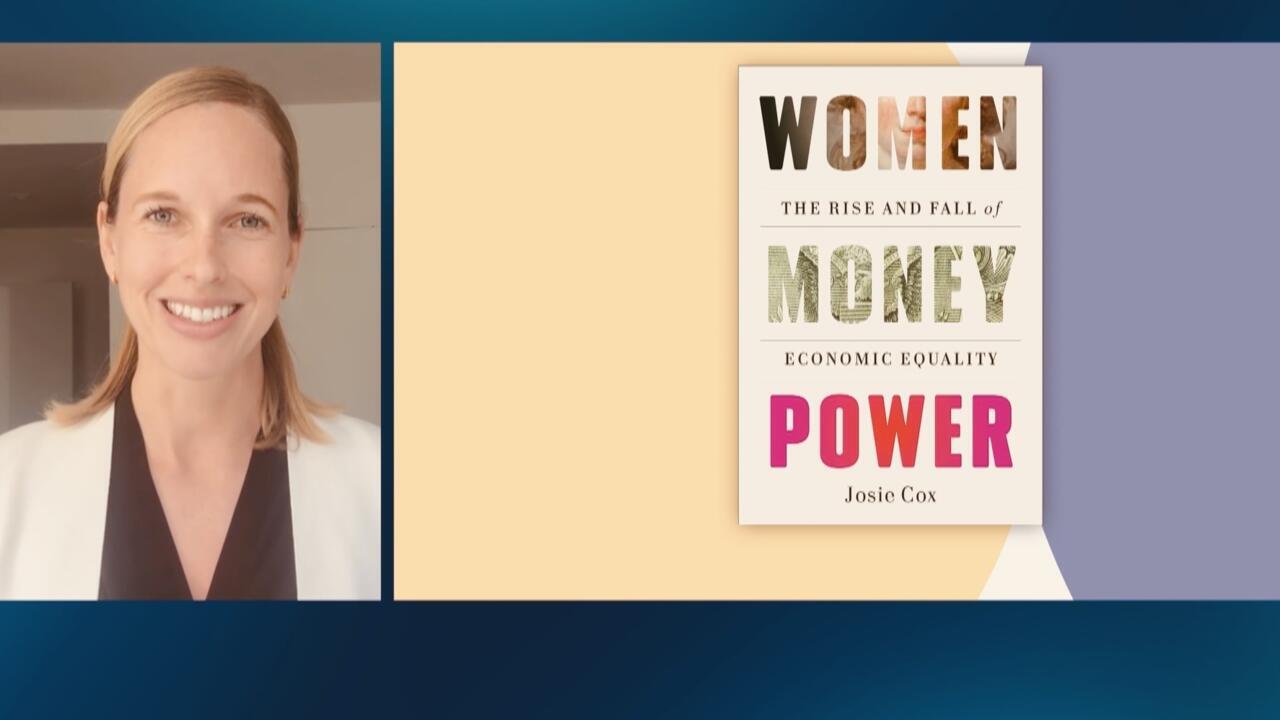“Several factors have turned masculinism into an expanding political force,” the report continued, stating that platform algorithms were bringing like-minded users together and enabling masculinist networks and influencers to organise, spread and monetise their ideas through large-scale anti-feminist campaigns.
The online movement then quickly found its way into politics, where populist players stood ready to channel the male anger into electoral capital.
‘Bloke things’
“It’s the whole galaxy gravitating around [Donald] Trump – and especially
Steve Bannon – that has set the strategic blueprint for uniting disparate masculinist groups and exploiting men’s grievances,” Stéphanie Lamy, researcher and author of the book “La Terreur Masculiniste” (The masculinist terror), explained.
“It costs less for a candidate to promise middle- and working-class men that they will regain control over ‘their women’, than to actually improve their material conditions,” she said.
In 2014, the US was the scene of the so-called Gamergate controversy – a sexist, anti-feminist harassment campaign that targeted female journalists and researchers.
“It was a large anti-feminist masculinist mobilisation that brought together fairly disparate groups under the one and same umbrella,” she said.
Many of the men who participated in Gamergate all shared the same core values: an hostility towards feminism, the anti-racist
Black Lives Matter movement, so-called Social Justice Warriors (SJW), along with a contempt for both journalists and researchers.
Gamergate became a showcase for
the American alt-right movement which strongly backed Trump during his first campaign to win the
White House. According to IRIS, the anonymous administrator of the “The Red Pill” – a masculinist subgroup on Reddit – played “a key role in rallying young. anti-feminist men to vote for Trump”.
Lamy described it as “a fairly young voter base that had hardly voted at all before”.
In his 2024 re-election campaign, Trump sought to mobilise the fringe group again and appeared on masculinist podcasts like “The Joe Rogan Experience” – one of the most popular podcasts in the world, which in October
drew 16 million listeners and averages at 200 million monthly downloads – to appeal to them. Nearly 90 percent of the show’s guests – and 80 percent of its audience – are male, with half of listeners aged between 18 and 34.
In February, 2024,
Nigel Farage, the head of Britain’s far-right ReformUK party, appeared on the “
Strike It Big” podcast where he described masculinist influencer Andrew Tate as “an important voice” for men. In the interview, Farage explained that young men’s masculinity was being looked down upon and that they were being told “you can’t be blokes, you can’t do laddish, fun, bloke things”.
According to Alice Apostoly, co-director of France’s Gender in Geopolitics Institute (GGI), said that even though few politicians, even conservative ones, are ready to openly align themselves with Tate’s rhetoric, they use it as a “symptom” of a broader malaise, claiming to “take young men’s mental health and their supposed ‘masculinity crisis’ into account”.
Trumpism was the first to grasp the mobilising force behind this type of rhetoric, which has since been used by other leaders around the world on their route to power. “Autocrats learn from one another,” Lamy remarked.
In
Argentina, large mobilisations for women’s rights – including pro-choice and anti-femicide protest – actually ended up paving the way for Javier Milei’s rise to power. “They sparked a backlash from Christian nationalists and libertarians,” Lamy said. “And Milei knew how to unite these groups.”
Similarly, South Korea’s former president
Yoon Suk Yeol, successfully courted the so-called Idaenam community, which Lamy described as “young men in their 20s frustrated by their lack of (sexual) opportunities”, to win the 2022 elections.
Researchers say that most of these young men are radicalised online, where they are exposed to misogynistic discourse and fed a masculinist propaganda pushed to them through platform algorithms.
“Masculinism is being used politically and is being offered as a societal project that incorporates not only masculinist proposals but also far-right ideas,” Apostoly said. “Young men are becoming a pool of valuable voters for these political players,” she said.
Last year,
the Financial Times published an investigation which analysed recent election results from several countries. The findings showed that men under 30 are now turning out to vote in greater numbers than ever before – and most of them are voting for far-right parties.
Conservative think-tanks have picked up on this trend, and are trying to capitalise on it by rolling back legislation related to equality. Trump, for example, has signed dozens of executive orders that are in line with “Project 2025” – a societal blueprint created by the ultra-conservative American think-tank The Heritage Foundation.
Eroding rights
Apostoly said that for years now, a “coalition” of associations, academic websites and politicians has taken form in a bid to push back against feminist societal gains. This became particularly evident in the aftermath of the
#MeToo movement, she said, where some started accusing feminist movements of going “too far” and “taking up way too much space”.
As masculinity networks have grown in both popularity and influence, landmark US legislation protecting abortion and LGBTQ+ rights have been rolled back in recent years.
This push has been driven by a combination of fathers’ rights groups (one of the first masculinist movements, which emerged in the 1960s-1970s), parents’ associations, medical organisations, and last but not least, influential Christian fundamentalist groups, Lamy said, citing a recent report from the
European Parliamentary Forum.
“Their victories reinforce each other, more or less explicitly,” she said.
In the US, Trump has surrounded himself with political masculinist influencers, and attacks on gender equality and LGBTQ+ rights have become clear priorities on his agenda.
In South Korea, which is currently experiencing a
strong anti-feminist backlash, one of Yoon’s 2022 election promises was to shutter the ministry for gender equality and family – the only public body supporting women who were affected by violence in a nation where the wage gaps and femicide rates are among the highest in the OECD.
“We’re dealing with pure and simple propaganda which is being instrumentalised by the hatred of women and which works at the ballot boxes,” she said, adding that “the radicalisation of young men towards reactionary parties and political projects” is happening on platforms “run by leaders [Marc Zuckerberg and Elon Musk] who have effectively sworn allegiance with
Donald Trump, who support his ultra-liberal socio-economic agenda and openly align themselves with certain masculinist values.”
Just a few days ago, the French womens’ rights group La Fondation des Femmes
sounded the alarm on Facebook’s parent group
Meta, saying it was making certain content published by rights groups in Europe invisible after the company stopped all advertisement about politics, elections and social issues.
“The voices defending womens’ rights are being silenced even more,” the foundation wrote in a post on Instagram. “As if this wasn’t enough, the algorithm isn’t working in our favour, our content is made invisible and our messages are fading away.”
Once this
propaganda has been legitimised politically, it no longer seeks to just appeal to those – it starts attacking those opposing it.
Political opponents, feminists and journalists in the visor
“This type of violence has very clear goals: to silence women and make them disappear from both
the digital public space and the public space,” Apostoly said.
In India for instance, misogynistic online campaigns were targeting female politicians and journalists critical of Indian Prime Minister Narenda Modi’s ruling party, IRIS said in its report.
Rana Ayyub, a prominent journalist, and Kavita Krishnan, an activist, have both been targeted. Lamy said that in Krishnan’s case – where the online harassment included daily rape and torture threats – “we finally realised that Prime Minister Narendra Modi was encouraging these acts and followed the accounts that were harassing her”.
Diane Shima Rwigara, the main opponent challenging Rwanda’s
Paul Kagame in the 2017 presidential race, was subject to similar tactics.
A few days after announcing her candidacy, fake nude photos began to circulate online. “The goal was to accuse her of sexual immorality, to attack her sexuality, her person. Pro-government commentators and news outlets shared the photos to mock her without questioning whether the photos were real, making fun of her as a depraved woman,” Apostoly said.
The national electoral commission ended up rejecting Rwigara’s candidacy on administrative grounds, and Kagame was re-elected with 98.8 percent of the vote.
“Misogyny is an extremely powerful unifying force, and goes beyond partisan lines,” Lamy said, noting that while masculine supremacy is a gateway to the
far right, radical masculinist circles can be found across the political spectrum.
“We are in a reactionary, fascist societal project,” Apostoly concluded. “This backlash against gender equality is symptomatic of a democracy that is sick. A democracy that’s in danger.”
This article was adapted from the
original in French by Louise Nordstrom.












